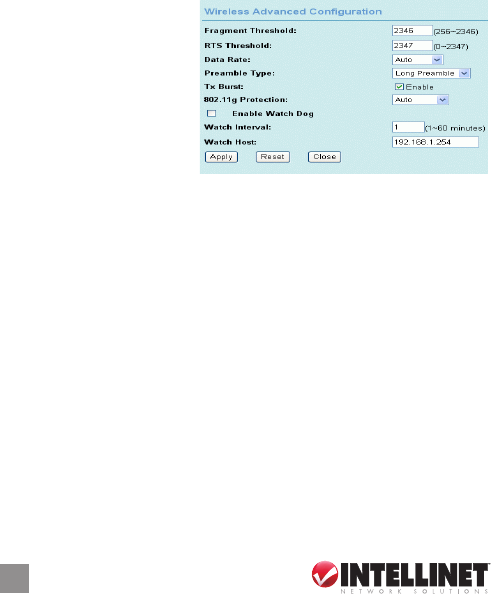
Check to enable this function.
Enter the port, IP address and
password as above.
Make a selection from the drop-down menu.
As noted on-screen, these entries are limited to 5-
or 10-character identiers.
Click to save and apply the current settings.
Click to clear and reset the current settings.
Click to exit this conguration window.
Click
“Setup” to display the
Wireless Advanced
Conguration screen and
options.
This is a fragmentation
mechanism for improving
the efciency when high
trafc ows along in the wireless network. If your 802.11g wireless
LAN adapter often transmits large les in the wireless network, you
can enter a new fragment threshold value to split the packet. The
value can be set from 256 to 2346; the default value is 2346.
This is a mechanism implemented to prevent the
“Hidden Node” problem, a situation in which two stations are within
range of the same access point but not within range of each other
(and are thus “hidden” from each other). When a station starts to send
data to the access point, it might not notice that the other station is
already using the wireless medium. When these two stations send
data at the same time, the transmissions might collide when arriving
simultaneously at the access point, with the collision most certainly
resulting in a loss of messages for both stations. When enabling RTS
Threshold on a suspect “hidden station,” this station and its access
point will use a request to send (RTS — also known as “ready to
send”), in which the station informs the access point that it is going
to transmit the data. Upon receipt, the access point will respond with
24
CONFIGURATION VIA THE WEB


















